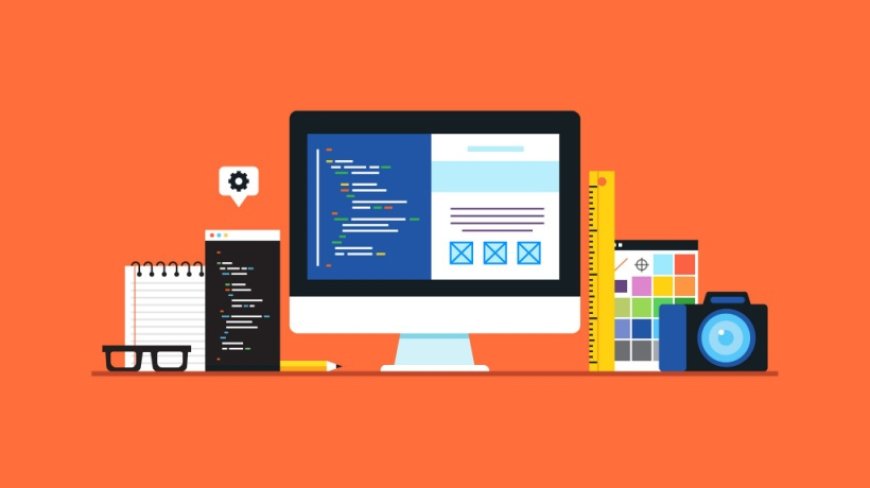Web Developer Vs Mobile App Developer: Complete Differences to Know

The digital era has ushered in a multitude of career paths within the technology sector, with web development and mobile app development standing out as two prominent fields. Each offers unique challenges, requires specific skill sets, and serves different needs in the technology landscape. For aspiring developers or businesses seeking to bolster their digital presence, understanding the distinctions between web development and mobile app development is crucial. This blog delves into the complete differences between these two roles, highlighting the skills, tools, environments, and career opportunities associated with each.
1. Platforms and Environments
Web Developer: Web developers build and maintain websites and web applications that are accessible through web browsers. Their work spans a wide range of environments, from small business websites to large-scale web applications used by millions. The primary technologies they use include HTML, CSS, and JavaScript for front-end development, and various languages and frameworks for back-end development such as Node.js, Python (Django), Ruby on Rails, PHP, and Java.
Web development environments are typically integrated development environments (IDEs) like Visual Studio Code or Sublime Text, along with version control systems like Git, and web servers such as Apache or Nginx. Web developers must ensure their creations are compatible across different browsers and devices, focusing heavily on responsive design.
Mobile App Developer: Mobile app developers specialize in creating applications for mobile operating systems like iOS and Android. They work in more specialized environments using tools specific to each platform. For iOS, developers use Xcode and the Swift or Objective-C programming languages. For Android, they use Android Studio and languages like Java or Kotlin.
Mobile developers can also choose cross-platform development frameworks such as Flutter (using Dart), React Native (using JavaScript), or Xamarin (using C#), which allow them to write code that runs on both iOS and Android devices. These environments are equipped with emulators and simulators to test how apps perform on different devices and operating system versions.
2. Programming Languages
The choice of programming languages significantly influences the approach and complexity of development in both web and mobile development.
Web Developer:
- Frontend: HTML, CSS, JavaScript
- Backend: Node.js, Python, Ruby, PHP, Java, C#, etc.
- Database: SQL, NoSQL (MySQL, PostgreSQL, MongoDB, etc.)
Web developers need to be proficient in front-end languages and frameworks for creating user interfaces and back-end languages for server-side logic. Knowledge of databases, both SQL and NoSQL, is also crucial for managing data.
Mobile App Developer:
- iOS Development: Swift, Objective-C
- Android Development: Java, Kotlin
- Cross-Platform: Dart (Flutter), JavaScript (React Native), C# (Xamarin)
Mobile app developers must be well-versed in the languages specific to the platforms they are developing for. Cross-platform frameworks allow for a single codebase to be used across multiple platforms, though knowledge of platform-specific languages is still beneficial.
3. Design and User Experience
Web Developer: Design and user experience in web development focus on creating responsive and accessible websites that work across a range of devices and screen sizes. Web developers collaborate closely with UX/UI designers to ensure websites are intuitive and user-friendly. They must consider factors like load times, navigation, and accessibility to provide a seamless user experience.
Mobile App Developer: Mobile app development requires adherence to platform-specific design principles. For iOS, developers follow Apple’s Human Interface Guidelines, while for Android, they adhere to Google’s Material Design principles. Mobile developers prioritize smooth, intuitive interactions, and transitions, as mobile users expect fast, responsive applications. They also need to consider the constraints of mobile devices, such as screen size, touch interface, and hardware capabilities.
4. Performance and Optimization
Performance optimization is a critical aspect of both web and mobile development, though the focus areas differ.
Web Developer: Web developers optimize performance by reducing load times, improving SEO, and ensuring compatibility across different browsers. They use tools like Google Lighthouse for performance audits, Webpack for bundling and optimizing assets, and server-side caching to enhance speed. Efficient code, minimized HTTP requests, and optimized images are essential for a fast and responsive website.
Mobile App Developer: Mobile app developers prioritize app startup time, memory usage, and battery consumption. They use platform-specific performance monitoring tools like Xcode Instruments for iOS and Android Profiler for Android. Developers must ensure that their apps run smoothly on a variety of devices, from high-end smartphones to older, less powerful models. Efficient use of resources, minimizing background processes, and optimizing code are crucial for maintaining performance.
5. Deployment and Distribution
The deployment and distribution processes differ significantly between web and mobile development.
Web Developer: Web developers deploy websites to web servers, making them accessible via URLs. This process involves uploading files to a server, configuring domain settings, and ensuring security measures like SSL certificates are in place. Distribution is straightforward as users can access the website immediately through their browsers, and updates are instantly available to all users without any additional action required.
Mobile App Developer: Mobile app developers package their applications and submit them to app stores (Apple App Store for iOS and Google Play Store for Android). This process includes rigorous testing, adhering to platform-specific guidelines, and often a review process by the app store. Distribution requires users to download and install the app, and updates are managed through the app stores. This process can introduce delays as updates need to go through the review process before being made available to users.
6. User Interaction and Access
Web Developer: Websites are accessed through web browsers, which may limit access to certain device-specific features. Web developers can use technologies like Progressive Web Apps (PWAs) to bridge some of these gaps, allowing for offline access, push notifications, and home screen installation. However, there are still limitations compared to native mobile applications in terms of accessing hardware features like cameras, GPS, and sensors.
Mobile App Developer: Mobile apps have direct access to the device’s native features, providing richer functionality and a more seamless user experience. Developers can leverage hardware capabilities such as GPS for location-based services, cameras for augmented reality applications, and sensors for fitness tracking. This direct interaction with the device’s hardware allows for more innovative and engaging applications.
7. Learning Curve and Skill Set
Web Developer: The learning curve for web development can be broad due to the variety of technologies and frameworks involved. Front-end development requires knowledge of HTML, CSS, and JavaScript, along with libraries and frameworks like React, Angular, or Vue.js. Back-end development involves server-side languages and frameworks, databases, and server management. Versatility and adaptability are key, as web development technologies evolve rapidly.
Mobile App Developer: The learning curve for mobile app development is steep, particularly for those focusing on native development for multiple platforms. Developers must master platform-specific languages and tools, as well as the nuances of the platforms they are developing for. Cross-platform development can simplify this, but a deep understanding of the underlying platforms is still beneficial. Continuous learning is necessary to keep up with platform updates and new development practices.
8. Job Market and Opportunities
Web Developer: The demand for web developers remains high due to the ubiquitous need for websites and web applications across all industries. Opportunities range from freelancing and working with startups to positions in large tech companies and digital agencies. The versatility of web development skills allows developers to work on a wide range of projects, from e-commerce sites and content management systems to complex web applications and enterprise solutions.
Mobile App Developer: Mobile app developers are also in high demand, particularly as mobile usage continues to grow globally. Skilled developers who can create high-quality, native mobile experiences are sought after by tech companies, startups, and specialized mobile app development firms. The rise of mobile gaming, augmented reality, and IoT applications further expands the opportunities for mobile developers. Freelancing and consulting are also viable paths, especially for those proficient in cross-platform development.
Conclusion
Web development and mobile app development are distinct fields, each with its own set of challenges, tools, and opportunities. Web developers focus on creating accessible, responsive websites that function across a range of devices, using a broad set of technologies. Mobile app developers specialize in creating rich, native applications for specific mobile platforms, leveraging device capabilities to provide engaging user experiences.
The choice between pursuing a career in web development or mobile app development depends on your interests, skills, and the type of projects you want to work on. Both fields offer rewarding careers with high demand and opportunities for growth. Understanding the complete differences between these roles can help you make an informed decision and set you on the path to success in the tech industry.
What's Your Reaction?


























